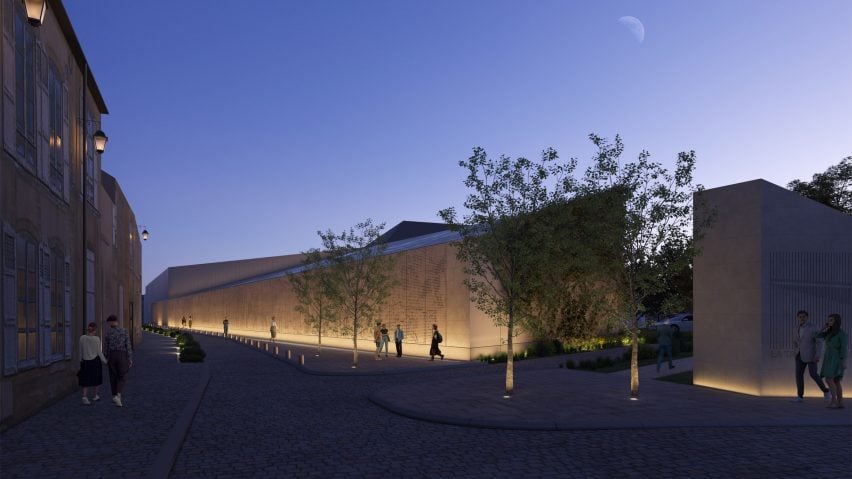
RSHP designs tapered museum extension to house Bayeux Tapestry in Normandy
British studio RSHP has unveiled plans to overhaul the Bayeux Tapestry Museum in Normandy, France, adding an extension to exhibit the 70-metre-long, historic tapestry.
RSHP's design will involve restoring the existing 17th-century museum and extending it to better display the embroidered cloth that depicts the lead-up to William I's conquest of England in 1066.
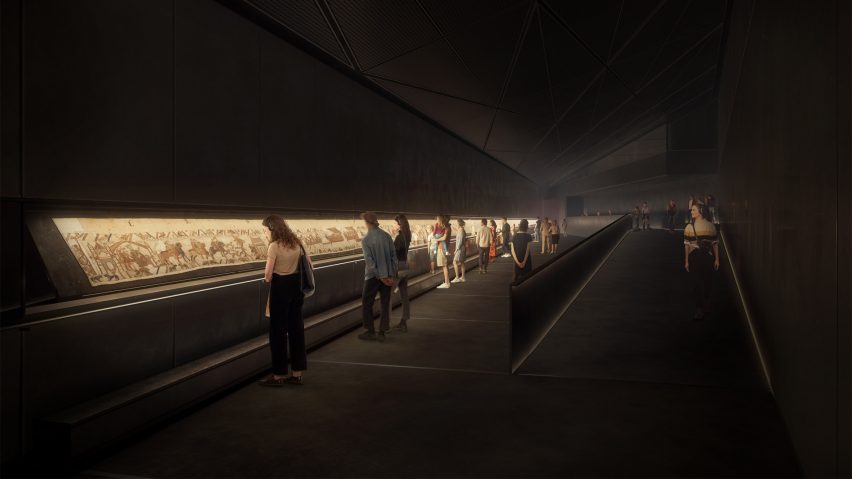
The two-storey extension will be situated adjacent to the existing museum, connected by a one-storey glass structure.
Stretching the length of the museum's site, the 115-metre-long new building will have a gently sloping roof designed to reduce its size alongside the neighbouring structures.
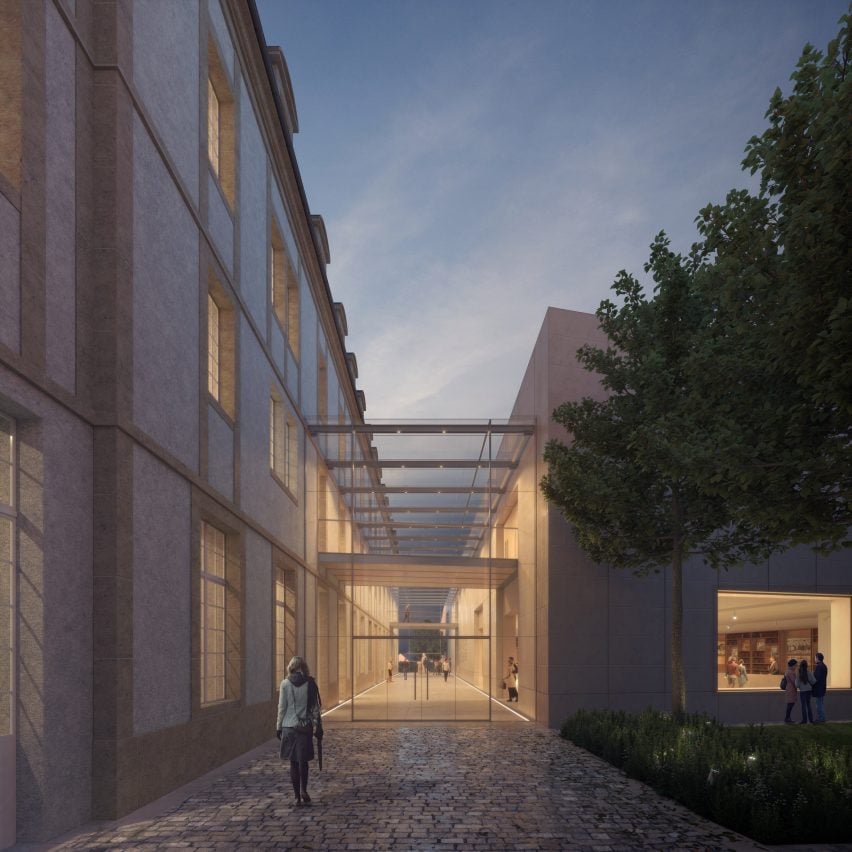
"Through sensitive scale and disposition of the building on the site and careful selection of materials, the new museum will be woven elegantly into the existing urban 'tapestry' in which it sits," said RSHP.
"The extension also resolves the complex geometry of the site, aligning with existing buildings and axes, delineated by the dynamic lines of the roof," the studio continued.
"This reduces the perception of the building size, reflecting the intimate scale of the houses adjoining the extension and, in its horizontality, the monumental dimensions of the tapestry within."
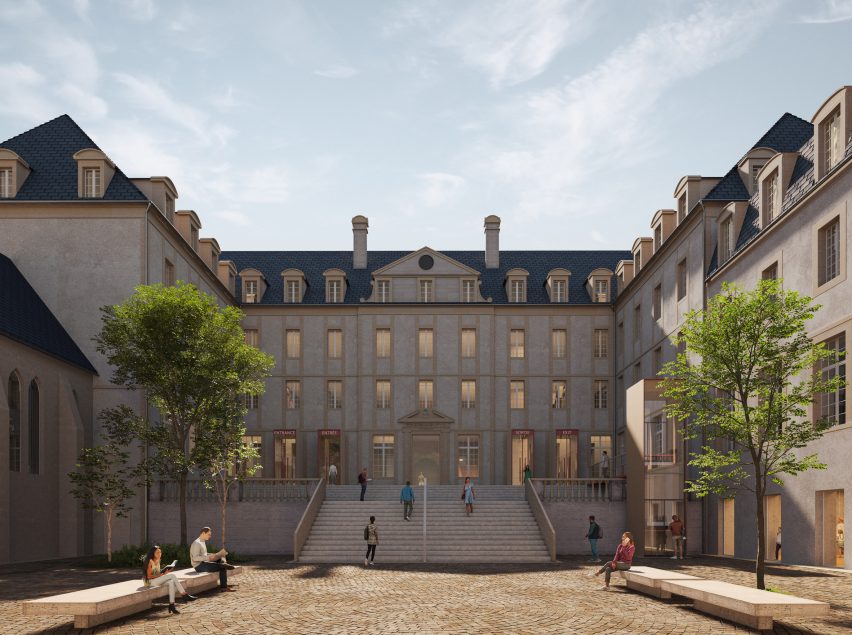
The tapestry, which is thought to date from the 11th century, will be exhibited along one wall of the tapering extension, with the visitor's route designed as a series of encounters revealing different parts of the artefact.
"The geometry of the space housing the tapestry is dictated by the spatial qualities that characterise the different views that are offered of this spectacular singular object," said RSHP.
"The visitor's proximity to the details of the embroidery and the panoramic view of the tapestry directly inform the shape of the new building," the studio continued.
"Multiplying the number and varied nature of the visitor's encounters with the tapestry, revealing it in a different light and from a variety of perspectives is the central driving force of the museum design, offering an experience that takes the form of an orchestrated series of dynamic encounters with the work."

According to RSHP, the display of the Bayeux Tapestry will be reflective of the artefact's UNESCO Memory of the World status.
"Completing this challenge is the preservation and study of this priceless artefact, a work of art that is unique both in terms of its format and its conservation requirements," said RSHP.
"Taking the form of a pilgrimage, the architecture and functional organisation of the museum are intended to create the ideal conditions in which the visitor can approach the tapestry, establishing a relationship with it that brings it to life."
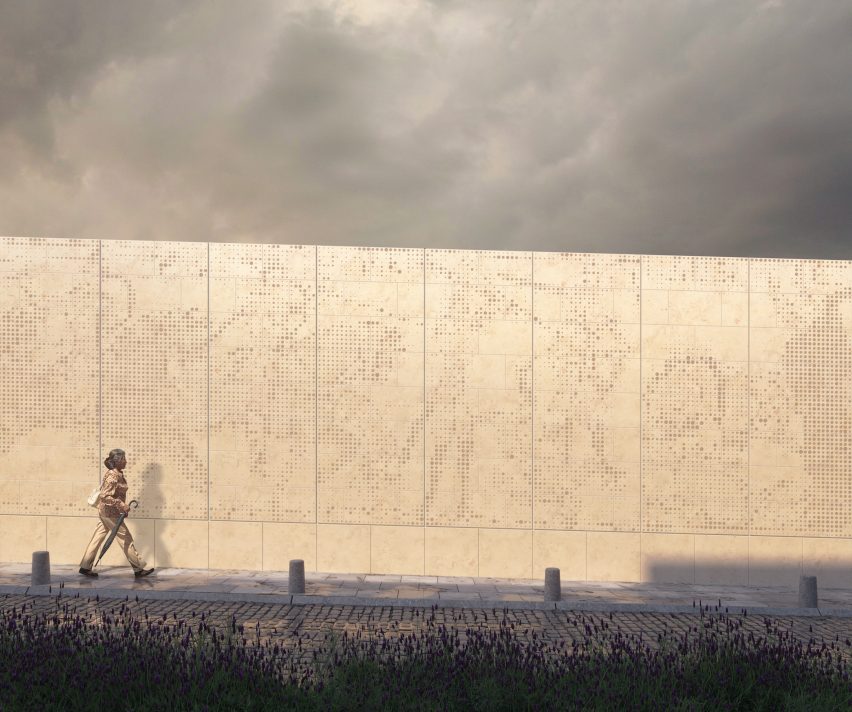
RSHP will also renovate the existing museum building to celebrate its historical features.
"The project does not seek to return the building to a former 'original', state but brings it back to life through adapting it to its new uses," said the studio.
"Clearly delineated interfaces between historic and new generate a dialogue between past, present and future."
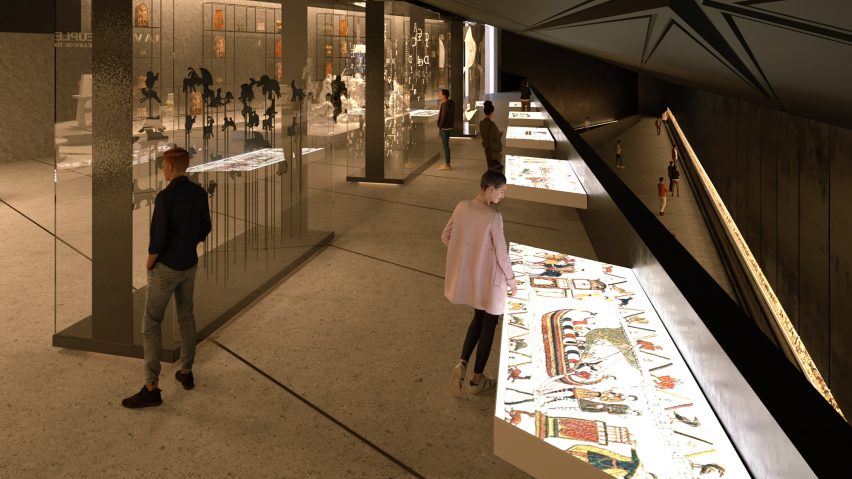
Work on the museum extension is set to commence in 2025, and it is expected to open in 2027.
The studio has previously designed a "fortress-like" building in northern France to house the Louvre's archives and recently revealed its design for a sustainable "post-carbon" neighbourhood in Paris.
The images are by RSHP unless stated.